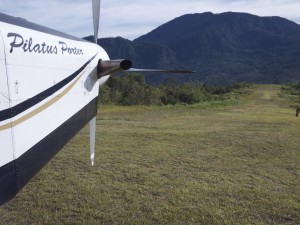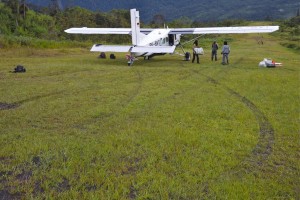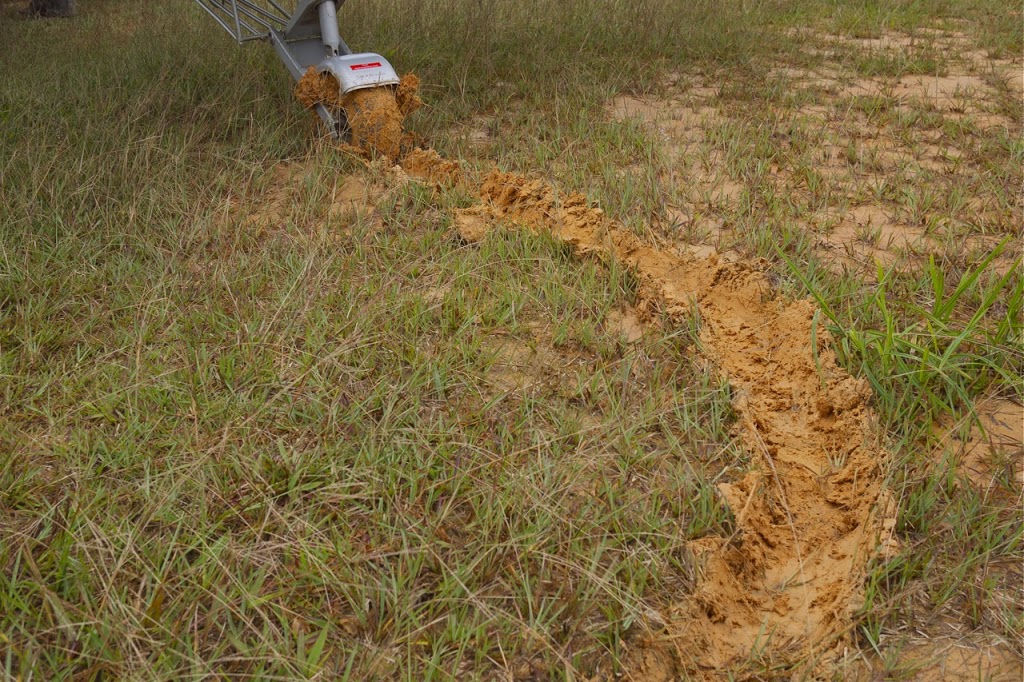 |
| Pilatus Porter tailwheel digging into soft clay |
It’s almost impossible to judge the condition of an airstrip from the air. What looks nice enough from above can turn out to be surprisingly soft once you’ve touched down. Standing water is common but doesn’t always mean the airstrip is going to be soft and boggy. It all depends what’s underneath. And that is something you can only know from having previously been there or at least chatted to someone else who has.
The worst kinds of airstrip are the pure grass ones grown on soil/dirt. In order to help with drainage, the locals tend to build these types of airstrip with a pronounced crown. An airstrip with a crown has a side slope on both sides, so that any water runs off the centre of the airstrip and to the sides. There’s usually a ditch on both sides to catch the water (or aircraft!). This kind of runway is the worst sort for a tailwheel aircraft to operate from.
You absolutely must land in the middle of the airstrip! If you land slightly off-centre on an airstrip with a crown, the aircraft will tend to want to slide off to that side. If it happens early into the landing roll you usually have enough airflow over the rudder to correct it. However, if you start to veer off the side later into the landing roll, you can have a problem.
 |
| Wangbe on a dry day. Note up-sloping runway and crown |
The technique for rescuing the situation is something you have to judge depending on how fast you’re going, how much runway is left and how close to the edge you’re drifting. Braking the opposite wheel can help but if it’s really slippery you sometimes have no option but to add power and get some airflow over the tail to help pull the aircraft back to the centre.
Even once down to taxi speed the fun continues. A fully laden Porter at all up landing weight is 2660kgs which is how we land most of the time (you don’t make money flying empty!). That’s a lot of weight on soft ground and in order to prevent getting stuck you have to keep moving when taxiing. The hardest part is turning 180 degrees on a slippery, up-sloping airstrip like Wangbe.
 |
| Turning 180 degrees at Wangbe |
In order to get the tailwheel to travel up the slope and position itself behind you so you’re lined up for departure, requires powering up the slope, steering to one side of the airstrip, stamping on the opposite rudder pedal and toe brake to get the aircraft to swing round whilst pushing forward on the control stick to get as much weight off the tailwheel as possible. If you stop at any time during this manoeuvre, you’ll probably get stuck.
As you’ll be off the centre of the airstrip to do this, the aircraft will want to slide in that direction as well as back down the slope, so you might need to use a bit of power to pull yourself back into the middle after you’ve got the aircraft pointing back down the runway. It’s quite a curious feeling when all three wheels are sliding sideways and the only way to stop it is to add power and turn into the slide.
Discover more from Matt Dearden
Subscribe to get the latest posts to your email.
